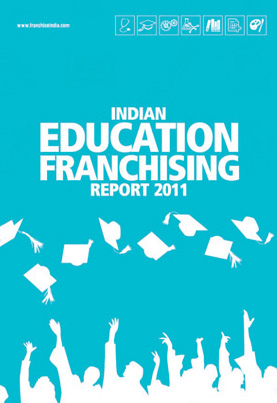
INDIA has world's largest young population. Ironically, despite
decades of efforts to offer education to all and billions of rupees being spent, the
harsh reality is that India is still falling short in meeting the educational
requirements of millions of its young people. In primary education, our national
strategy for education and youth development has been too narrowly focused on an
academic, classroom-based approach. At higher education level, our system places too
much emphasis on a single pathway to success: attending and graduating from a three to
four years of college. Yet only 30 per cent of young adults enroll for it. Meanwhile,
the scope of vocationalization itself needs to be imbibed from the secondary education
stage in India. This would call for a serious restructuring of the 'Education Policy'
and education delivery.
The education sector offers a potent business opportunity to investors, which could
become as big and lucrative as the telecom and retailing. This opportunity emanates from
the fact that India youth still aspire to receive quality education and that the gap
between the number of potentially employable people and corresponding training
institutes available to train them is still wide. Therefore, educating Indian students
en masse creates an immediate business opportunities in the education sector in both
formal and informal education categories.
Partnerships enabled by franchising have played a pivotal role in expanding and
strengthening the professional and supplemental education infrastructure in the country.
However, some of the restrictive government legislations have been an impediment,
resulting in the slow growth of franchising in K-12 and higher education sectors. When
statistics read that 40 per cent of India's school-going population is trying to
register in private schools, which are only 7 per cent of the total, and 11 per cent of
the youth are able to enroll for higher education, a mismatch in demand-supply ratio for
quality education becomes glaringly obvious. This very fact highlights how private
participation can play a larger role and how franchising can facilitate the provision of
quality education.
The first edition of 'Education Franchising Report 2009' served as a pertinent reference
tool regarding education as an enterprise. In the second edition, we have added and
upgraded the scope of opportunities that have lately come to exist in the Indian
education sector, analysed the government's role in augmenting education growth in the
Union Budget 2011-12, along with an updated directory.
'The Education Franchise Report 2011' gives the education sector, particularly enabled
by franchising, the importance it has long deserved. The report is an endeavour to guide
readers on the relevant issues and the relevant business opportunity the education
sector presents to India's education and training systems. It covers everything from
latest developments in education franchising to many broader and relevant issues which
are required to be fashioned in a business when franchise route is used for growth. Case
studies of original architects of education franchising in India provides an insight
into how these organisations grew manifolds.
We have been amassing precious knowledge about franchising in the education sector,
which we have put together in this report and feel that it would serve as a reference
guide for all education companies looking at the potential of franchising. I urge all
the members involved in the education industry to give their support to the 'Education
Franchising Report 2011.'
Business Opportunities
Browse By Investment Range
Browse By States
Popular Cities